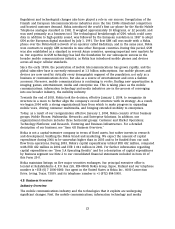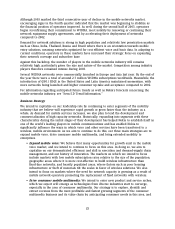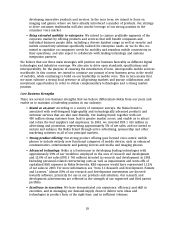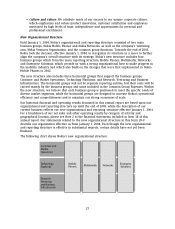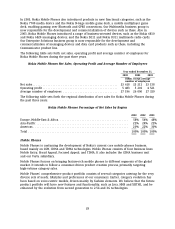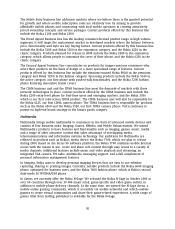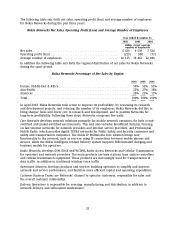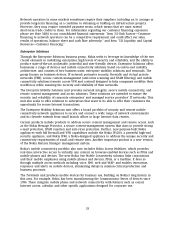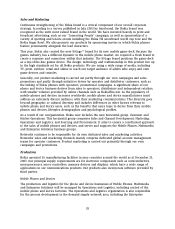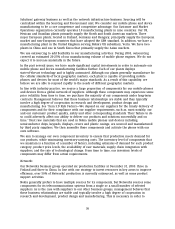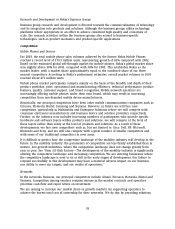Nokia 2003 Annual Report Download - page 32
Download and view the complete annual report
Please find page 32 of the 2003 Nokia annual report below. You can navigate through the pages in the report by either clicking on the pages listed below, or by using the keyword search tool below to find specific information within the annual report.In NMedia, we develop products that blur the traditional boundaries between various media, and
also aim to introduce devices that embody new experiences for the consumer. We currently offer
the Nokia 3300 music device, and plan to release the Nokia 7700 media device in 2004.
In Mobile Enhancements, Nokia aims to extend the Nokia brand experience by creating products
that make consumers’ lives easier, safer, more productive and fun. Current products include items
such as the Nokia Fun Camera and the Nokia Observation Camera as well as Nokia Imagewear
products, the Nokia Kaleidoscope 1 and Nokia Medallions. In Home Communications, Nokia
supplies advanced digital satellite, terrestrial and cable television receivers for the home. For more
information on Nokia Home Communications, see ‘‘—Nokia Ventures Organization in 2003,’’ below.
Networks
Networks is a leading provider of network infrastructure, service delivery platforms and related
services to mobile operators and service providers. Focusing on the GSM family of technologies, the
group aims at leadership in GSM, EDGE and WCDMA radio networks. Our networks have been, or
are expected to be, installed in all major global markets that have adopted these standards. In
mobile networks, we have a leading position and seek to strengthen this by developing the
equipment that operators need to offer voice services and advanced IP network-based multimedia
services. Additionally, we are a leader in TETRA networks for professional users in the public
safety and security sector, and an important player in broadband access networks. On top of its
product offering, Networks offers a comprehensive portfolio of services for operators comprising
network planning, deployment, maintenance, integration, optimization and operations. The
organizational changes that were introduced in Nokia on January 1, 2004 did not result in any
alteration to the structure of the Networks business group.
Networks’ strategy addresses both mobile voice and mobile data markets. In mobile voice, we aim
to drive and benefit from fixed-to-mobile substitution in mature markets. At the same time, we
are working to speed up global mobile subscriber penetration by bringing wireless voice to
markets where mobile penetration is low. In mobile data, we seek to accelerate the rate at which
mobile multimedia services are adopted, by providing products and solutions such as messaging,
downloading and streaming, as well as the network functionalities needed for network operators’
profitable deployment and operation of mobile multimedia services.
By the end of 2003, Nokia had supplied GSM networks to over 120 customers. At year-end, Nokia
also had 37 publicly announced 3G WCDMA deals and was rolling out 26 3G WCDMA networks in
15 countries. Nokia is a supplier to six of the 12 commercially launched 3G WCDMA networks.
Nokia has also publicly announced the delivery of EDGE-capable hardware to 20 operators, and
Nokia was a supplier to nine of the 11 commercially launched EDGE networks. By the end of 2003,
Nokia had 76 GPRS core network customers. In 2003, Nokia introduced new solutions for IP-based
mobile services. By year-end, Nokia had also supplied about 60 MMS solutions.
The mobile infrastructure market contracted by just over 15% in euro terms during 2003,
according to Nokia’s preliminary estimates, and Nokia’s infrastructure sales declined by 14% to
EUR 5.6 billion. Despite the contracting market, Nokia Networks remained one of the industry
leaders with a market share in network infrastructure across all mobile standards globally of
slightly above 15%.
31




